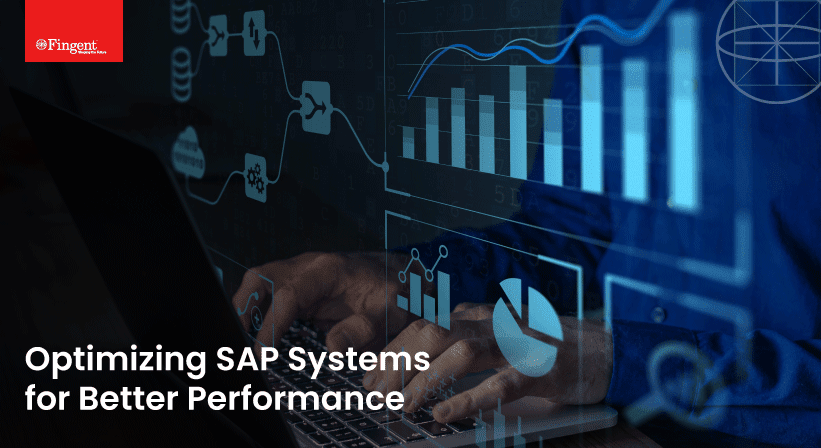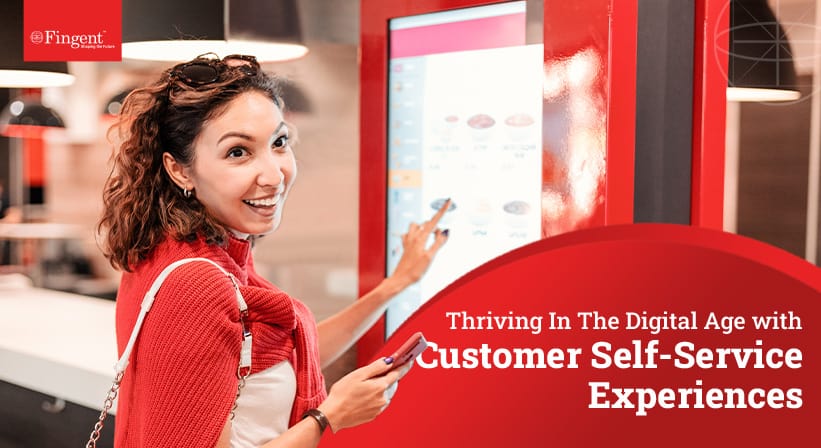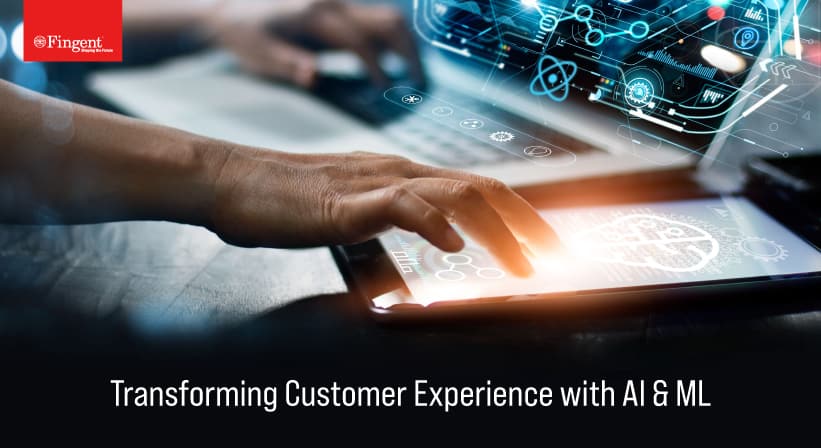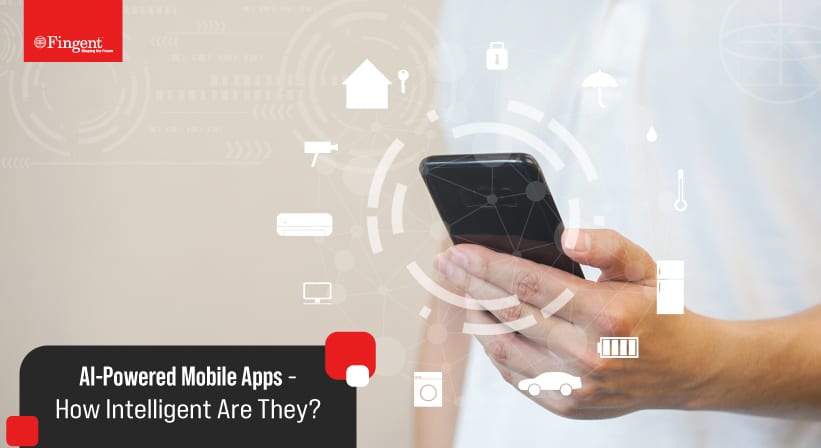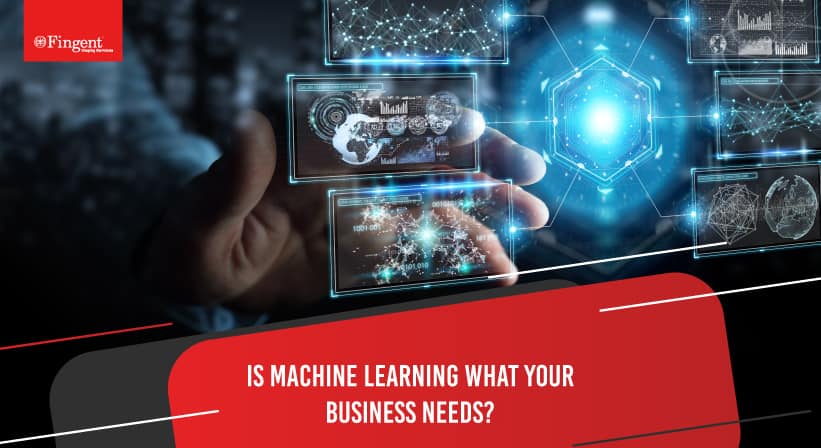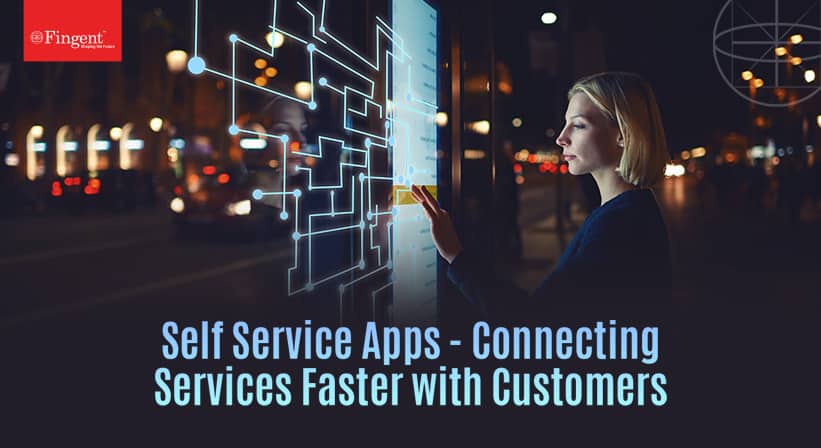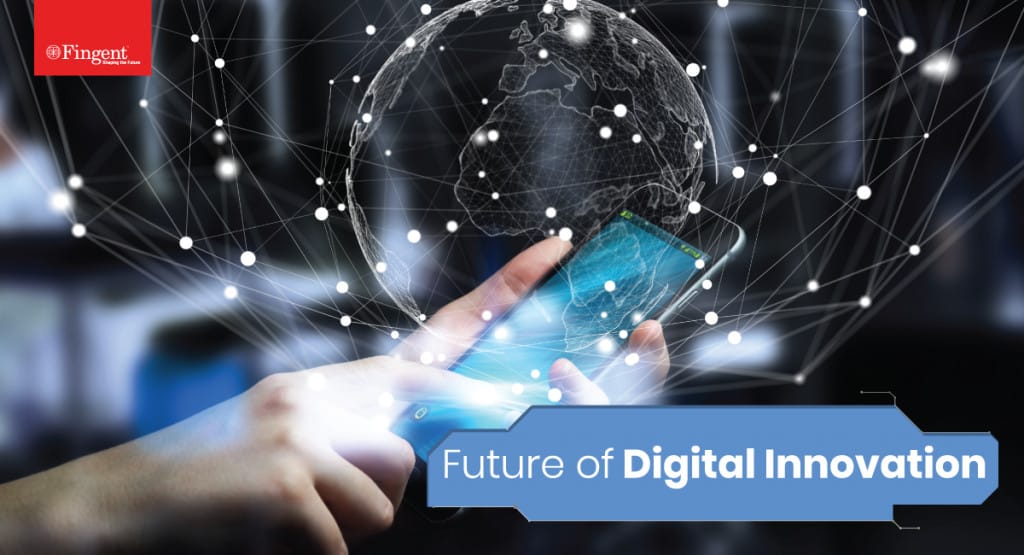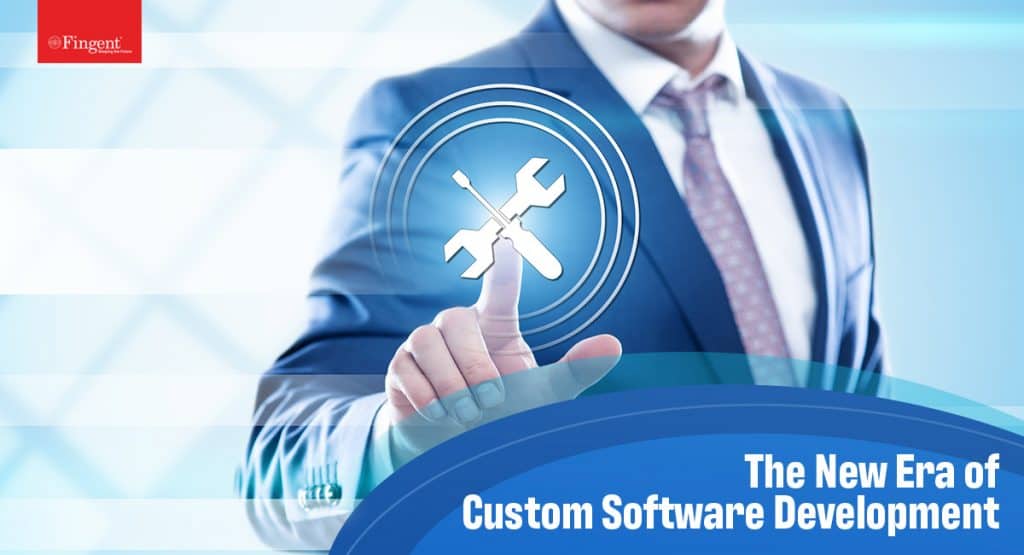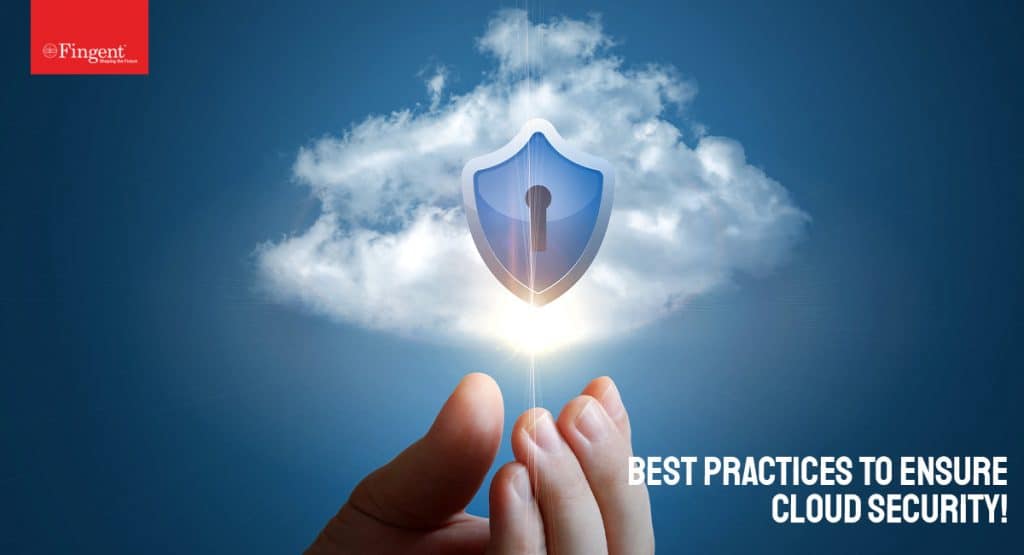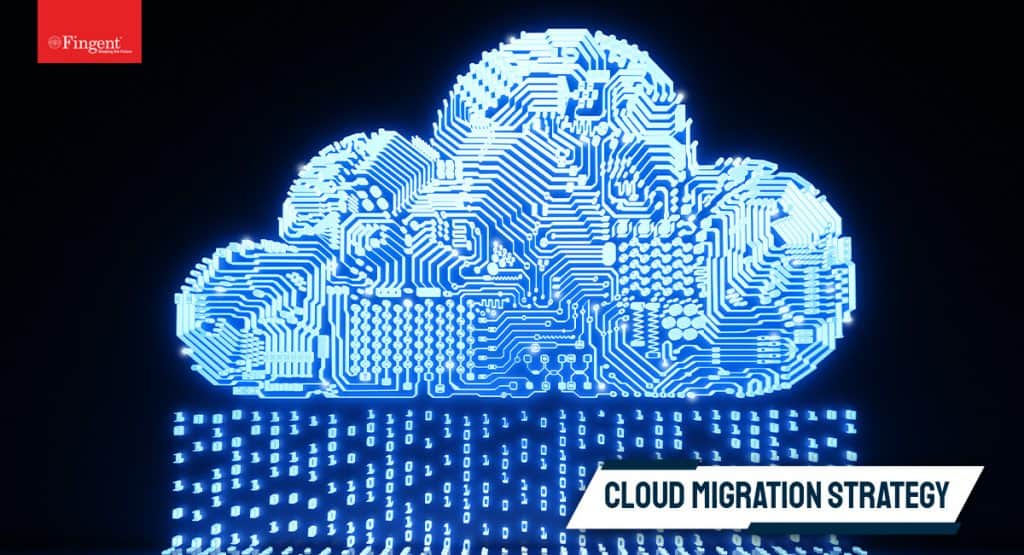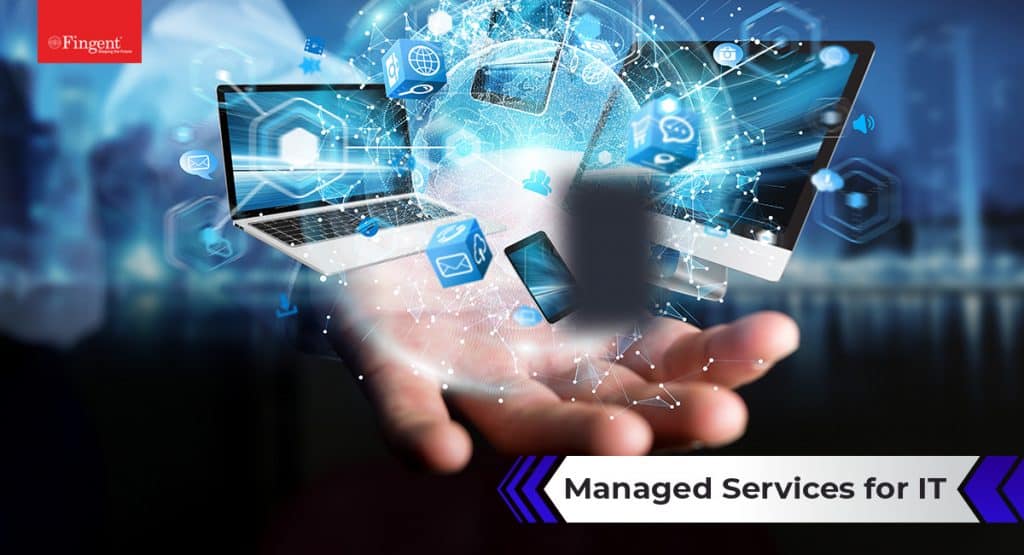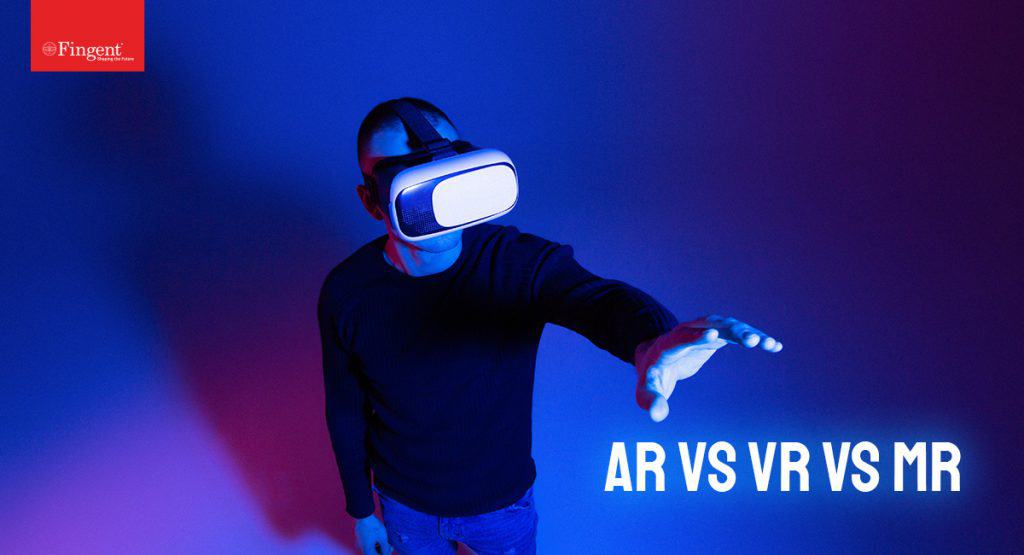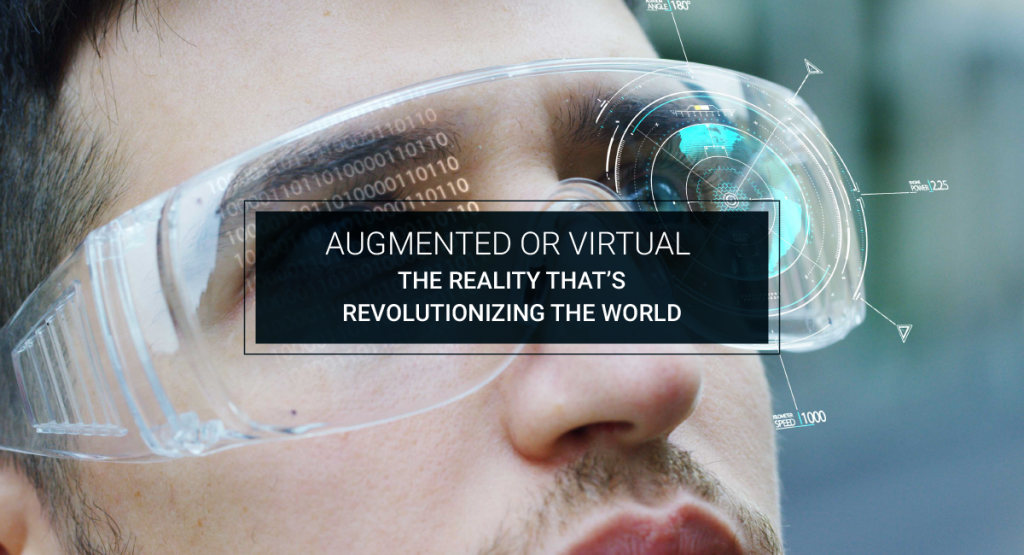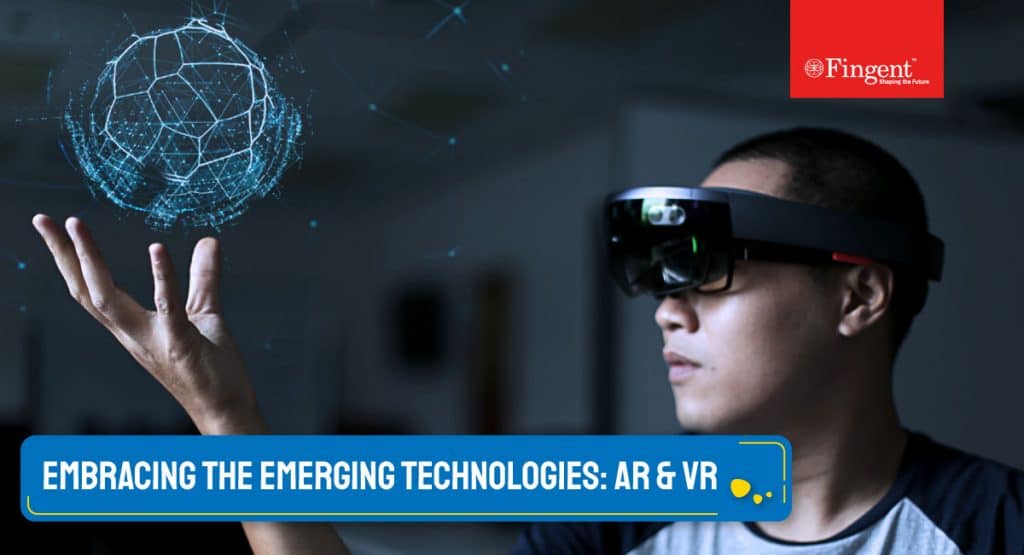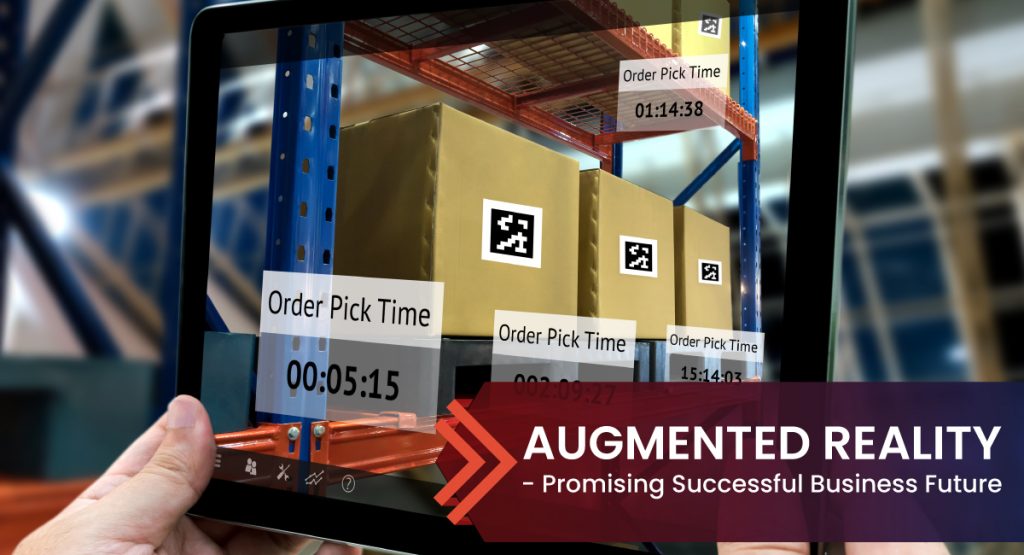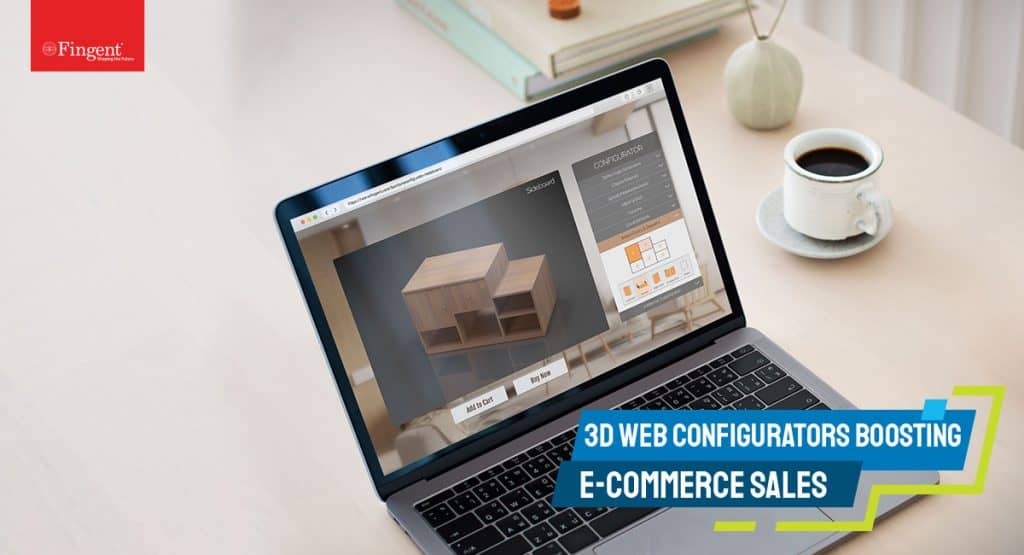Tag: Customer Experience
Businesses find themselves at a critical juncture as customer expectations soar and their loyalty hangs by a thread. The key to captivating and retaining customers lies in mastering the art of seamless omni-channel experiences—an unparalleled approach that fuels growth, builds unbreakable bonds, and sets organizations apart in the digital era.
Embracing this transformative strategy is no longer a choice but a necessity. Thankfully, at the forefront stands SAP Customer Experience, empowering businesses to redefine the very essence of customer engagement.
In this blog, we dive into the crucial significance of delivering seamless omni-channel experiences in the digital era and explore the pivotal role played by SAP Customer Experience in achieving omni-channel excellence. We will also take a look at the success stories of industry-leading companies that benefited from SAP customer experience.
Meaning and Significance of Omni-Channel Customer Experiences
Today, customers’ journey has become complex and dynamic. It spans various touchpoints such as websites, mobile apps, social media platforms, physical stores, and more.
Omni-channel experiences refer to the seamless integration and synchronization of these channels, providing customers with a consistent and cohesive journey regardless of the device or platform they choose to engage with.
It involves delivering a unified and personalized experience that transcends individual touchpoints. To achieve success most businesses have adopted SAP customer experience. Let’s delve into it to understand how it can enhance omni-channel experience.
SAP Customer Experience – Where the Boundaries Between Channels Dissolve
SAP Customer Experience stands as a transformative force, reshaping how businesses engage with their customers across the entire journey. From capturing initial interest to post-purchase satisfaction, SAP Customer Experience covers every aspect of the customer lifecycle, enabling organizations to forge lasting relationships and foster brand loyalty.
By leveraging the power of integrated data, intelligent insights, and personalized content, SAP Customer Experience empowers organizations to deliver consistent, contextual, and captivating experiences across every touchpoint.
With SAP Customer Experience, businesses can unlock the true potential of omni-channel excellence, creating a symphony of interactions that resonate with customers on a profound level. By seamlessly connecting commerce, marketing, sales, service, and customer data, SAP Customer Experience sets the stage for organizations to thrive in the digital era, building lasting customer relationships and achieving unparalleled success.
SAP Customer Experience- Where Extraordinary Customer Experiences Take Center Stage
SAP customer experience strategies not only meet customers’ rising expectations but also provide valuable insights into their preferences and behaviors, enabling organizations to make data-driven decisions and tailor their offerings more effectively. Consider a few key elements of a successful omni-channel strategy:
- Weaving the Threads of Connection: Like the threads woven meticulously into the fabric, a successful omni-channel strategy integrates various channels, ensuring they work harmoniously to deliver a consistent and unified brand experience.
- Insights as Your North Star: By leveraging data from various channels, you gain a deep understanding of your customers’ preferences, behaviors, and needs. These insights fuel your strategy, allowing you to create highly personalized experiences that resonate with each individual.
- Personalization: Just as a perfectly tailored suit enhances confidence, personalization in the omni-channel realm enhances customer satisfaction. By tailoring content, recommendations, and promotions to individual preferences, you create meaningful connections that build loyalty and trust.
- Orchestrating Symphony of Consistency: Consistency across channels is the melodic backbone of your strategy. From the visual identity to the tone of voice, maintaining a consistent brand presence reinforces recognition and cultivates a sense of trust among customers.
- Real-Time Responsiveness: Being able to engage with customers in real-time enables you to provide immediate support, address concerns, and deliver personalized offers. This responsiveness creates a delightful experience that makes customers feel heard and valued.
- Seamlessness: Customers should effortlessly move between channels, with their journey continuing seamlessly, preserving their progress, preferences, and context.
Read more: Optimizing SAP Systems for Better Performance.
Real-World Success Stories of SAP Customer Experience Implementation
SAP Customer Experience presents compelling use cases for different industries and challenges. By leveraging the suite’s capabilities, organizations can overcome the challenges they face, be it in retail, e-commerce, or B2B sectors. From creating a unified shopping experience, and driving personalization, to streamlining sales processes and enhancing customer service, SAP Customer Experience provides the solutions needed to achieve omni-channel excellence and deliver exceptional customer experiences.
1. Retail industry: Creating a unified shopping experience across online and offline channels
Challenge: The retail industry faces the challenge of bridging the gap between online and offline channels to deliver a seamless shopping experience. Customers expect consistent product information, pricing, and promotions regardless of whether they interact with a brand online or in a physical store. Aligning inventory, customer data, and processes across these channels becomes crucial for success.
Solution: SAP Customer Experience offers a comprehensive solution for retailers to overcome this challenge. By integrating SAP Commerce Cloud with their existing systems, retailers can synchronize product catalogs, pricing, and inventory in real-time. This ensures that customers receive accurate and consistent information, whether they browse online or visit a store. Additionally, features like click-and-collect and endless aisle empower retailers to offer flexible shopping options, creating a unified experience that seamlessly blends online and offline channels.
2. E-commerce sector: Driving personalized recommendations and targeted marketing campaigns
Challenge: E-commerce businesses strive to deliver personalized experiences that resonate with customers, driving engagement and conversions. However, understanding customer preferences, delivering relevant recommendations, and executing targeted marketing campaigns at scale can be a significant challenge.
Solution: SAP Marketing Cloud, a component of SAP Customer Experience, equips e-commerce businesses with the tools to address this challenge. By leveraging customer data, machine learning, and predictive analytics, SAP Marketing Cloud enables businesses to understand individual customer preferences and behavior. This valuable insight fuels personalized product recommendations, tailored content, and targeted marketing campaigns across various channels. The result is a highly engaging and relevant experience that resonates with customers, increasing conversions and fostering brand loyalty.
3. B2B organizations: Streamlining sales processes and enhancing customer service through omni-channel support
Challenge: B2B organizations often have complex sales cycles and multiple touchpoints for customer interactions. The challenge lies in streamlining these processes and providing consistent support across channels while maintaining personalized and high-quality customer service.
Solution: SAP Sales Cloud and SAP Service Cloud, components of SAP Customer Experience, are tailored to address the unique needs of B2B organizations. SAP Sales Cloud offers comprehensive sales management tools, empowering sales teams with real-time insights, streamlined processes, and collaborative capabilities. This allows for efficient management of complex sales cycles and ensures a consistent experience for customers, regardless of the channel they engage through.
Watch now: Why Businesses Should Opt for SAP to Fuel Their Growth & Success?
Best Practices for Crafting Seamless Omni-Channel Journeys through SAP Customer Experience
Following best practices like these mentioned below will help in successfully implementing SAP Customer Experience:
- Conduct a comprehensive analysis of existing customer touchpoints: Conducting a comprehensive analysis involves examining all the channels through which customers interact with your brand, including websites, mobile apps, social media platforms, physical stores, and call centers. This will help you can identify areas of improvement and uncover opportunities for delivering a seamless omni-channel experience.
- Define clear omni-channel objectives and KPIs: Well-defined objectives and KPIs can help you can track progress, measure success, and make data-driven decisions throughout the implementation process.
- Establishing seamless integration between SAP Customer Experience modules and existing systems: By integrating SAP Customer Experience with existing systems such as CRM or ERP, you can leverage existing data and workflows, streamline operations, and maximize the value of the solution.
- Continuous monitoring and optimization of omni-channel experiences: Implementing SAP Customer Experience is not a one-time task but an ongoing journey of continuous improvement. Identifying areas for optimization can enable you to make informed decisions to refine and enhance the omni-channel experiences you deliver, ensuring they remain relevant, engaging, and effective.
How Fingent Can Help Leverage SAP Customer Experience
Partnering with Fingent can unlock the full potential of SAP Customer Experience for your business. With our expertise in SAP implementation and customization, we can guide you through the journey of leveraging emerging technologies, integrating IoT devices, and harnessing predictive analytics.
Our deep understanding of customer experience trends and innovative solutions enables us to tailor SAP Customer Experience to your specific needs, ensuring that you stay ahead of the curve in this rapidly evolving landscape.
Reach out to us, and let’s discuss your needs.
Stay up to date on what's new

Featured Blogs
Stay up to date on
what's new



Talk To Our Experts
“A simple rule: always give people more than they expect.” – Nelson Boswell
The cycle of business starts and ends with customers. Keeping them satisfied and happy is the number one rule of any business that dreams of being successful. Customer needs and expectations never cease, so businesses should always be prepared to meet and exceed their needs. Artificial Intelligence has been a substantial help in this area since the late 19th century, and it consistently finds new innovative ways to amplify its presence in modern businesses.
Meeting Customer Needs and Exceeding Expectations
Recent research reported that a good number of executives have already planned to invest more in rising technology to gain a competitive advantage. Due to the Covid-19 pandemic, almost all businesses were forced to move to an online platform to survive, further underscoring the need to adopt AI technology.
It is extremely imperative to recognize and address the needs, desires, and emotions of people which change from moment to moment. Businesses have to provide their customers and clients with care beyond purchases and respond to the intricacies in their lives. In a world that moves forward so fast, it’s best not to fall behind.
Read more: Realizing Self- Service in Modern Customer Experiences
What Is Artificial Intelligence and How Does It Impact Customer Experience?
The textbook definition of Artificial Intelligence is – a semblance of human-like intelligence processed by machines, especially computer systems. AI is used by developers to:
- efficiently perform mundane tasks that humans otherwise do.
- connect with customers.
- recognize patterns.
- solve problems.
AI Customer experience is when artificial intelligence tools are used to learn about customers and improve their business experience. The AI technologies that are famously emerging include machine learning, natural language processing, automation, chatbots, virtual assistants, and even enhanced customer experience platforms.
There are three major ways in which AI impacts Customer Experience –
1. Better Understanding Of Customer
Artificial Intelligence combined with machine learning enhances the gathering and analyzing of social and factual data of customers, which then facilitates businesses to gain an accurate understanding of their customers. AI is known for continuously learning and improving from the data it surveys. This enables it to predict customer behavior perfectly.
2. Real-time Decision Making
Making decisions in real-time is the ability of AI to collect fresh data from current interaction with a customer and make a decision with near-zero delay. It is a very effective marketing strategy and often leads to predictive analysis, which is the process of analyzing statistics, data mining, and modeling to make accurate predictions.
3. Hyper-Personalization
Artificial Intelligence, along with all its advanced technologies, proffers content that is specifically relevant to the customer. This eradicates the need to search for services the customer requires manually and adds a layer of comfort to the business and its customization techniques.
Top Ways Businesses Use AI To Tweak Customer Experience
Following are the top 8 utilities that Artificial Intelligence provides to boost customer experience –
1. Personalization
Businesses can easily gain a clear picture of their customer preferences and requirements by using AI and ML technologies which acquire and analyzes social, factual, and behavioral data. AI is built to predict client behavior by regularly surveying and improving the data it collects. This facilitates companies to analyze customer demographics and personal preferences. This, in turn, highlights the relevant products and resources during the browsing process.
2. Chatbots
A chatbot is a conversational AI using machine learning and natural language processing. It is automated and programmed to pretend to be human and carry out programming tasks based on specific triggers. Its unique ability is to conveniently and efficiently generate conversations between two people.
The most commonly found type of chatbot is a “question-answer bot” —this form of chatbot refrains from using advanced artificial intelligence but instead accesses a smaller knowledge base and utilizes pattern recognition.
Artificial Intelligence powered Chatbots make a business’s presence accomplished by allowing customers to find what they are looking for while simultaneously delivering a seamless experience.
Did You Know: 35% of customers want to see chatbots being used more often to improve communication and offer a better experience overall.
The best examples of Chatbots are – Apple’s Siri, Amazon’s Alexa, and Google Assistant.
Using simple rules and past interactions, bots provide insightful replies to any query, making their responses accurate, short, and creative.
3. Predictive Analysis
Predictive analytics, by definition, is to use data collected to predict a business’s future. It utilizes statistical algorithms blended with internal and external data to foresee future trends, ultimately enabling businesses to optimize inventory, enhance delivery times, boost sales, and reduce operational costs. A more accurate and punctual prediction occurs when Artificial Intelligence is added to the mix. Predictive analytics can be used by advanced analytics tools and machine learning models across any industry or business function.
4. Voice Recognition
The voice recognition model functions purely with the aid of AI to
- analyze the user’s voice and language,
- learn the words spoken,
- and then bring forth outputs with transcription accuracy as text data on a screen or model content.
With the help of this technology, devices can interact and respond to human questions in uncannily natural language.
With the ability to understand and converse with human language, Voice AI has opened up great opportunities for businesses to serve their customers better. It efficiently speeds up processes, increases productivity, and scales operations.
Approximately 55% of virtual assistant users prefer speech recognition apps be they proffer a complete hands-off operation of devices.
Examples of businesses that integrated AI for voice recognition and have successfully replaced touch-screen devices are – Amazon Echo, Siri, Google Assistant, Google Home, Amazon Alexa, and a few others.
5. Sentiment Analysis
A sentiment analysis system collects specific customer feedback and uses it to improve company products and services. When AI technologies are fused with this system, it can identify objects or situations that customers feel any negative emotions towards as expressed in text. AI understands the undertone of a statement rather than simply noting a negative or positive connotation.
Sentiment Analysis is majorly utilized by marketers to better understand their consumers’ sentiments, beliefs, and motives perfectly to make advertising to specific groups effective. It has a wide array of benefits ranging from patient insights and online reputation management to competitor analysis and product development.
Almost all social media platforms use Sentiment Analytics powered by AI. This way brands and companies can keep track of the content being shared and censor or filter content that could evoke negative emotions and cause problems.
6. Customer Journey Mapping
A customer journey map as the name suggests, is essentially the visual representation of the customer’s journey from brand discovery to purchase and post-purchase. It enables businesses to retrace a customer’s footsteps and see where their services might need any improvements or upgrades.
All through this journey, AI and Machine Learning play a vital role in ensuring a headache-free shopping experience. There are three essential stages to customer shopping: the Pre-Purchase, purchase, and post-purchase. With the assistance of AI and ML, customers thread these maps and help brands analyze and prioritize activities that impact customers, boosting internal collaboration and coordination.
The benefits of creating a customer journey map are that it helps:
- streamline the customer experience,
- optimize customer service costs,
- accelerate proactive sales solutions to customer problems, and lastly, boost customer retention rate.
Examples of businesses using customer journey mapping are – Home Depot, JPMorgan Chase, Starbucks, and Nike.
7. Fraud Detection
Fraud detection is another surprising area that AI has a distinguished hold over. AI can work with internal security to help organizations improve and protect corporate activities. Businesses can use AI to examine large quantities of exchanges and unravel misrepresentation patterns.
In the case of online fraud detection and prevention, machine learning consists of a collection of AI algorithms that are specially trained with the company’s data to suggest risk rules. The business owner can then enforce the rules to block or allow certain user actions, such as suspicious logins, identity theft, or sketchy transactions.
When fraud detection is handed over to AI and Machine Learning, businesses reap great benefits like – faster and more effective detection, reduced manual review time, faster predictions with bigger databases, and cost-effective solutions.
8. Personal Data Protection
AI and Data Protection are like two sides of the same coin; both are very important, and one cannot progress without the other. We all see and know that AI technology is advancing rapidly; it raises important questions about the use of personal data and the protection and storage of said data in AI systems.
AI is frequently used to minimize the risk of privacy breaches by encrypting personal data and detecting potential cybercrime incidents. It is, therefore, pivotal for businesses to maintain a balance between technological advancements and artificial intelligence with respect for data protection rules and guidelines.
The main benefit of Data Protection Artificial Intelligence is the elimination of human errors and its keen sense for spotting new trends and patterns.
Amazon, Apple, Facebook, IBM, Microsoft, and many other grandiose organizations have implemented this system, and many more are predicted to follow.
Read more: How AI and ML are reshaping customer experience.
AI In Action – Use Cases
AI has been implemented in virtually every facet of our lives and in every industry imaginable. Here are 3 Use Cases that will give you a gist of how they can be applied successfully.
1. Chatbots Creating Engaging Learning Experiences
Learning experiences become unique and personalized when the right assistance is provided at each stage of learning. That’s where leading educational institutions are now deploying Automated Intelligence-driven ecosystems to facilitate students to interact with AI-enabled Teaching Assistants (AiTA). The system, when tightly integrated with other Teaching Assistant Bots, enables improved interaction, easy instructor-led training, and enhnaces student-instructor relationship.
2. Simplifying Claims Management for Legal Firms
A typical compensation claims processing takes up to three years for case settlement costing an average of $85000. It’s often challenging for legal firms to balance time, money, and the cases in hand. That’s why they are now implementing AI and machine learning to improve performance efficiency. Utilizing AI and machine learning to settle claims can help legal firms reduce costs up to 57%.
3. Netflix Gets You!
Netflix is the largest streaming platform, with more than 200 million customers globally. It gained a majority of its popularity due to its personalization feature. This streaming service uses AI to create a personalized home screen interface for individual subscribers and accounts. When viewers create a new account, they are directed to pick a few of their favorite TV series and movies. The AI at the crux of Netflix analyzes the data fed to it and provides recommendations similar to the favorites picked by the user. It continues to customize the suggestions displayed based on what the user watches.
4. Rolls-Royce Rolls Out Smart, Responsible Manufacturing
To exemplify the impact of AI on Predictive Analytics, we can look at Rolls-Royce, one of the world’s largest manufacturers of aircraft engines. It deployed predictive analytics to help drastically reduce the amount of carbon produced in its engine’s product while simultaneously optimizing maintenance to assist clients and keep their planes flying longer.
5. Ask Julie!
“Ask Julie” is Amtrak’s virtual assistant. Amtrak, the national passenger railroad company of the United States has implemented this chatbot to the best advantage. Ask Julie has successfully helped provide Amtrak provide a seamless customer experience to “over 375,000 customers on their website each day and over 30 million passengers on over 300 trains each year.” The result – an 8X return on investment, more effective customer services. and reduced email costs.
Finding The Right AI Partner – A Few Tips
Digitalizing a business can be very daunting, especially when you want to integrate Artificial Intelligence into its core. Finding a partner who understands you and can communicate well with you is quite hard to find, but you must not give up hope! Keep looking because it is better to spend a little more at the start and have a quality setup rather than spend less and have a wobbly foundation that could jeopardize your whole AI implementation. Here are a few tips to keep in mind while looking for a capable AI partner –
1. Priorities
When looking for your potential AI partners, choose someone who can help the business and its employees prioritize and manage workloads.
2. Comprehend The Difference Between Machine Learning And Artificial Intelligence
Although the two may sound like they perform the same functions, do not be fooled. They each have their own region of expertise so look for someone who acknowledges that.
3. Invest In The Right Tools
In the current economy, businesses can not afford to splurge money on luxuries. Pick a partner who understands your company’s budget and can plan a perfect setup for you.
How Fingent Can Help Seamlessly Leverage AI For Customer Experience
Artificial Intelligence is a wide ocean of opportunities, if you have the right swimming gear, you can glide on its surface. Making the right decisions and trusting the right people with your projects should not be taken lightly. Fingent is committed to providing impactful software solutions to meet business goals seamlessly. Our certified experts focus on client-centered transparency and offer complete services with a wide range of Artificial Intelligence capabilities. Our team can boost your business to be more efficient and robust through intelligent technology. We have nearly two decades of experience and completely understand our client’s needs and requirements. Give us a call and let us know how we can help you.
Stay up to date on what's new

Featured Blogs
Stay up to date on
what's new



Talk To Our Experts
No longer the stuff of science fiction, artificial intelligence (AI) and machine learning (ML) are revolutionizing the way customers interact with brands. Businesses that have embraced these technologies can reshape the customer experience, curate one-of-a-kind buyer journeys, and strengthen bonds with their target audiences.
As your organization works to remain competitive in the modern business ecosystem, it must tap into the power of AI and ML technologies to provide a superior customer experience.
How Are AI and ML Enhancing Customer Experience?
Artificial intelligence and machine learning solutions can profoundly impact every facet of the customer experience. By leveraging these technologies, your business can:
1. Facilitate Hyper-Personalization
Customers who interact with your brand are looking for a personalized experience. As such, brands that put their products and services at the center of attention instead of prioritizing experience will miss the mark. Likewise, blasting your customers with generic advertising content or sending them broad, basic messages simply won’t cut it anymore. Instead, you must personalize every interaction to deliver timely and relevant content to each user.
Artificial intelligence and machine learning technologies facilitate a level of hyper-personalization that was thought to be unachievable just a few years ago. In a 2022 Salesforce survey, 88% of consumers reported that an experience provided by a company is almost as important as the product. Using AI and ML technologies, you can personalize customer experiences by utilizing real-time data, like their browsing history, purchasing habits, etc.
Artificial intelligence and machine learning solutions can also eliminate friction from the customer journey. For instance, AI- and ML-powered chatbots can leverage information from past interactions to create personalized messages for each consumer. This will minimize customer frustration by reducing how often consumers are asked to repeat information they have previously provided.
2. Allow Customers to Stay Connected 24/7
Customers expect access to timely and relevant support around the clock. However, staffing your customer support department 24/7 is financially infeasible. So how do you bridge the gap between customer expectations and the fiscal limitations of your business? AI and ML solutions are the clear answer.
With artificial intelligence and machine learning technologies, you can provide your customers with access to automated support like chatbots. These bots can respond immediately to customers and resolve many basic product- or service-related issues without tying up your customer support staff. This capability will not only allow you to reduce the workload on your team but also help you provide more timely and omnichannel service to customers, no matter when they reach out for assistance.
3. Conduct Predictive Behavior Analyses
The sooner you can identify consumer behavior trends, the better your chances of capitalizing on emerging opportunities. Unfortunately, traditional analytics solutions do not facilitate real-time decision-making because they often rely on data that is days (or even weeks) old.
The good news is that artificial intelligence and machine learning technologies enable you to conduct predictive behavioral analyses using real-time data, guiding your decision-making processes and enabling you to adapt to emerging trends like never before.
4. Enhance Your Understanding of Target Audiences
Artificial intelligence and machine learning technologies allow you to step into your target audience’s mind. You can use these newfound insights to guide your digital marketing strategies, refine products and services, and enhance the customer experience.
Due to how AI and ML learn and evolve, these technologies will only become more effective over time as they get access to more data, better helping you anticipate how your target audiences are likely to behave in the future. This enables you to proactively eliminate friction points from the buyer’s journey and paves the way for increased sales and better profitability.
Read more: Is AI-powered mobile app what you need for your business now?
Use Cases: Major Industries that Have Embraced AI and ML
Artificial intelligence and machine learning technologies are going mainstream, and many industries are taking advantage of these powerful tools for both B2C and B2B interactions. Business leaders in these sectors understand that these technologies will significantly impact their organizations’ ability to compete, both now and in the future.
Some of the industries that are using AI and ML technologies on a broad scale include:
- Software development
- Language processing and transcription
- Retail
- Customer service
- Marketing
- Manufacturing
- Finance
- Agriculture
- Logistics and transportation
- Healthcare
The healthcare and logistics sectors were some of the earliest adopters of artificial intelligence and machine learning technologies, whether by predicting the likelihood of patients developing certain diseases or by providing customers with more accurate shipping estimates. These industries (and every other on this list) utilize AI and ML technologies to enhance the customer experience.
These technologies also provide meaningful insights into the efficiency of business operations. Organizational leaders can use the information gleaned from these technologies to proactively address critical organizational growth hurdles and promote business continuity.
How Your Business Can Optimize Customer Experience with AI and ML
Artificial intelligence and machine learning technologies will empower your business to revolutionize the customer experience along every meaningful touchpoint. First and foremost, these technologies will help your business truly understand the customer journey and its impact on organizational profitability. And once you understand the state of your business and how well it is currently managing the customer experience, you can begin using your AI and ML tools to refine the customer experience.
If you want to maximize your return on investment, consider incorporating artificial intelligence and machine learning technologies into as many business processes as possible. You can use these solutions to automate redundant processes, hyper-personalize advertising content, and refine the customer experience from top to bottom.
Read more: Use cases and business benefits of deploying Machine Learning!
Tap into the Power of AI and ML with Fingent
Are you ready to harness the power of artificial intelligence and machine learning so that you can provide your clients with the experience they deserve? If so, then it is time to explore a partnership with Fingent.
At Fingent top custom software development company, we provide customized artificial intelligence applications and machine learning solutions. Cumulatively, these technologies will differentiate your brand in the competitive digital marketplace and enable you to modernize the customer experience.
To learn more about Fingent’s suite of services and solutions, contact our team today. Together, we can reshape your customer experience and set the stage for the growth of your business.
Stay up to date on what's new

Featured Blogs
Stay up to date on
what's new



Talk To Our Experts
Customer Experience – Two words that could make or break your business.
Today, customers expect businesses to provide nothing short of an excellent customer experience whenever and however they shop. This is going to be the main differentiator between you and your competitors. The race to own customer experience is on!
Some businesses are learning this the hard way, but you don’t have to. The solution is right here – Technology. Through this article, we want to help you understand how technology can improve customer experience. We will also discuss top technology trends to help your brand beat the competition.
But first, let us explain why customer experience matters.
Does Customer Experience Matter?
Did you know that 66% of customers expect companies to understand their needs and expectations?
Gone are the days when an unhappy customer used to complain directly to the brand. Today, they choose to complain to the rest of the world through social channels such as Twitter, Facebook, Instagram, and more. Creating a powerful and memorable customer experience is more complicated than ever in such a scenario.
While that is true, it is also true that these customers share positive customer experiences on these platforms as well. 71% of customers recommend a product or service just because they received a “great” customer experience.
As a brand, you may define your brand’s promises. However, the customer decides whether or not your brand delivers on its promises. According to market research by Gartner, customer experience drives over 60% of brand loyalty.
To satisfy customers, most businesses hire and train good people. But that is not sufficient. They need tools that will help them deliver a top-notch customer experience and make them want to come back to you. Using technology for customer experience can build your brand through satisfied customers.
That takes us to the next intriguing question: How does technology improve customer experience?
How Does Technology Improve Customer Experience?
Technology for customer experience gives customers unlimited access to information, allowing them to demand products and services whenever they want. As the speed of technology to enhance customer experience accelerates, businesses must evolve quickly. Brands that use technology to enhance customer experience will thrive, but you can be sure that those that are slow to react will not survive.
Here are three key ways in which technology enhances customer experience:
1. Increased opportunities
Using smartphones, customers can research products, raise queries, and purchase products or services no matter where they are and what they are doing. A study revealed that consumers in the UK spend over 22.8 billion pounds per year on online shopping while using public transport.
With consumers becoming hyper-connected, businesses need to leverage increasing opportunities to engage new and existing customers. Technology can help companies integrate all marketing channels to deliver a cohesive customer experience irrespective of their channel. Technology can help you use customer data effectively to deliver seamless experiences.
2. Reach every audience segment
According to a Google report, 90% of online shoppers use more than one device to shop. A shopper may use one device to search for a product and another to check the pricing and complete the purchase.
Businesses need to be available with the right messaging at the right time. Technology for customer experience will help you reach your customers on any device. Technology can enable you to provide contextually relevant experiences that engage customers in the right place, at the right time, and with the right message.
3. Communicate better
Most customers switch brands because the purchasing process is too difficult. Technology offers solutions to reach customer demands. AI-powered chatbots enable your brand to communicate better with your customers.
Since chatbots provide detailed records of conversations with customers, you can use that data to analyze to reveal insights on consumer pain points. You can use these insights to improve products and services.
Top Technology Trends That Improve Customer Experience
1. AI chatbot
AI chatbot is restructuring the way brands communicate with their customers. These conversational AI chatbots are responsible for creating a personalized customer experience, making sentiment analyses, and more. Consider a use case:
Fingent helped one of the oldest state universities to develop an AI-driven ecosystem that allows students to interact with an AI chatbot (teaching assistant). These are built to be trained and allow instructors to upload the content that students need. These chatbots can manage student queries and allow for keyword and tag searches of teaching material.
2. Virtual reality
Virtual reality is a game-changer enabling customers to educate themselves about your company. Plus, VR redefines how your sales reps understand customers, increasing their empathy and enabling them to suggest better solutions to their issues.
Fingent recently built a highly interactive visual medium to enable medical students to quickly gain efficiency in stand medical procedures.
3. Augmented reality and 3D configuration
Augmented reality is considered a boon to improving the digital customer experience. It gives customers a clear picture of your product, helping in quicker purchasing decisions.
Fingent helps build interactive mobile apps that enable 3D purchase decisions. It also develops agnostic web solutions for eCommerce to better use AR capabilities.
Fingent- A Perfect Partner to Create Custom Technology Solutions To Enhance Customer Experience.
The impact of technology is a powerful catalyst for change, and the speed of that change is getting faster and faster. Fingent can help you identify technology trends and capitalize before it is too late.
You must acknowledge and meet consumer demands for your business to increase market share and stay relevant. Marrying customer service and technology can drive customer delight.
Fingent brings you deep expertise in experience strategy and design, harnessing best-in-class solutions. We can help you drive transformation across the customer lifecycle, sales, marketing, and more.
Fingent top custom software development company is equipped to provide support across channels. Our quick and easy setup allows you to cut time and lower costs. With the help of AI and automation, we can route your tickets to the right agent and boost customer satisfaction. Find out more about us and chat with our experts to see how this can be done.
Stay up to date on what's new

Featured Blogs
Stay up to date on
what's new



Talk To Our Experts
The ongoing digital revolution is forever reshaping how businesses interact with their customers.
Modern technologies such as artificial intelligence, chatbots, machine learning software, and other solutions have allowed businesses to break away from traditional phone-based support models in favor of an omnichannel approach.
Countless businesses now allow customers to connect with support agents across multiple mediums, such as email, messenger applications, SMS, and on-site chat apps. However, far too many are still neglecting a core component of the service experience — self-service.
Whether your organization operates within the business-to-consumer (B2C) space or the business-to-business (B2B) space, you must offer customers self-service
options. We explore the role that self-service plays in the modern support experience.
When businesses understand the benefits of offering self-service, which technologies enable them to provide this type of support, and how to leverage ambitious custom software development services, it is easy to transform the high-value customer support vision into a reality.
Read more: Why Your Business Needs a Customized Order Management System
Why Customer Self-Service Experiences are Invaluable in the Digital Age
Consumer expectations are evolving as technology becomes increasingly ingrained in our daily lives. Smartphones allow consumers to access virtually limitless information on a whim.
When most individuals encounter a problem or want to acquire new information, they typically break out their smartphones, conduct a quick internet search, and select the most relevant results.
“How does this apply to customer service?” you ask. Simply, consumers have become much more self-reliant when encountering an issue with a product or service. The majority of your customers would much rather troubleshoot a product independently without having to
connect with a service agent. It’s also true when they want to purchase products or services.
Therefore, your organization must offer self-service support options if you want to meet the expectations of current consumers. By doing so, you can mitigate consumer frustration, expedite the resolution process, and demonstrate that your company is responsive to the needs and wants of your target audience.
That said, creating a self-service experience on your website can be a challenging and tedious process. That is why many companies turn to experienced digital transformation companies when they need a custom technology solution.
What Technologies Facilitate Self-Service?
When businesses partner with a software development team to provide custom services, a broad range of technologies is available that provide clients with a competitive advantage. Some of these technologies include:
1. Artificial Intelligence
Artificial Intelligence technologies are essential for creating dynamic self-service experiences. Without these technologies, self-service tools would be rigid and provide minimal assistance to your clients. Fortunately, AI allows developers to create innovative solutions unlike any off-the-shelf option.
2. Machine Learning
When used in conjunction with AI, machine learning software offers an immersive self-service experience. Over time, machine learning technologies can provide curated assistance based on past interactions with customers.
3. Chatbots
While chatbot technology is often used for lead generation, it can also be deployed to enhance the self-service experience. For instance, a consumer could provide information about their problem to a chatbot, and the program could connect them with resources to resolve the issue.
This approach will prevent the consumer from searching through your support page or reading your entire FAQs section to find the necessary information.
Read more: Prepare for the Future of Digital Innovation with these 10 Services From Fingent!
Top Ways Self-Service Enhances Customer Experiences
Self-service is rapidly becoming one of the most popular methods of customer support, and for a good reason. Reliable self-service enhances great customer experience in several distinct ways.
1. Reduces the Workload on Staff
If service tools handled even 20% of your customer support requests, then your staff would experience a significant decrease in their daily workload. Naturally, a lighter workload would improve morale and employee retention. Ultimately, this will reduce your hiring and recruiting costs.
In addition, reducing the workload on your staff directly impacts the quality of service they can provide your customers. Your team will have more time to devote to your customers because they will not be in a rush to handle the next service call.
2. Empowers Customers
They feel empowered when you provide customers and clients with user-friendly self-service options. They are no longer at the mercy of your support staff and can freely take matters into their own hands to resolve frustrating product issues.
Self-service can also minimize any product issue’s negative impact on brand loyalty. If a consumer experience only minor inconveniences when a problem occurs, they will be more willing to continue doing business with your company.
3. Reduces Costs
Performing support tasks manually is labor-intensive and time-consuming. As a result, you must maintain a fully-staffed support center to handle incoming customer service requests. The overhead associated with this can be excessive.
While self-service solutions will not eliminate the need to employ support staff, you can reduce the size of your support department. Each team member can work more efficiently and focus on handling complex product issues. Self-service will address the majority of minor problems.
4. Expedites the Delivery of Service
Few things negatively impact a customer’s brand perception than excessive hold times. By partnering with software development experts to deploy self-service solutions, you can significantly reduce wait times and expedite support delivery to your clients.
This approach will boost customer satisfaction and optimize the average lifetime value of each client.
How a Software Development Partner Can Help
When you partner with an innovative team of cloud-native software development professionals, you can expect cutting-edge solutions that leverage the latest self-service technologies.
In addition to custom software development services, your partner should offer business technology consulting. With proper consultation, you can refine your vision with timely advice that will improve your approach, incorporate more suitable technology, or align with your budgetary constraints.
If you would like to work with a passionate software development company dedicated to helping you shatter growth barriers with dynamic tech, let’s chat today.
Stay up to date on what's new

Featured Blogs
Stay up to date on
what's new



Talk To Our Experts
If you’re a business with an expanding online retail footprint, your hard work actually begins once a customer places an order. Each new order triggers a multifarious chain reaction, right from confirming the order through payment acceptance to picking, packing, and finally shipping the consignment to the right location. As digital shopping becomes the primary buying method today, it’s important for brands to simplify online ordering for their customers.
How can you make your order processing and fulfillment smooth enough for both your customers and employees?
If you’re a small business, you might be able to handle your orders with basic pre-packaged software. But as your business grows, you need a customized order management system to fulfill the orders gushing in. With a custom order processing software, your business can bring the best of both worlds, that is, streamline your order processing and fulfillment and simplify order placement for your customers.
View Infographic: Custom Software vs. Commercial Off-the-shelf Solutions
What is an Order Management Software?
Order management refers to the set of processes used by an organization to track, manage, and fulfill an order, right from the time when it (order) is placed by a customer to when it is safely delivered at the right destination.
Order management systems are software tools used to monitor the end-to-end customer order journey. With order management software, you can organize and automate processes, keep track of your merchandise, control the delivery process, and ensure that your customer receives the right order at the right time in a good condition.
Say you’re running an online medical procurement store. A clinic places an order with you for disposable saliva ejectors. Your order management software checks if the payment was successful, send the order details to your warehouse, tracks the order form when it is being picked, packed, and shipped, and finally ensures that the saliva ejectors were delivered properly.
Modern order management systems are capable of going beyond delivery and order fulfillment. They can record customer service actions, track returns or exchanges, prevent shipping errors and processing delays, and save profits by reducing refunds and reshipping costs. By collecting vital metrics that define your success and efficiency, your business can identify what’s working and what needs to be improved.
Why Do You Need a Customized Order Processing Software?
Investing in an off-the-shelf order processing system is enough if you’re content with your business’s status quo. But it wouldn’t suffice if you’re thinking of expanding your business. Offering personalization is the only way to make yourself stand out from the competition and attract more customers. That means, making some serious changes to your existing workflow. When you try to alter your current workflow to incorporate personalization, your canned software offers limited ways to do it successfully. This is where a custom software solution comes to your rescue.
Watch Video: Why Your Business Requires Custom Software
Custom order management software allows you to configure the workflows required to meet your specific business needs. If off-the-shelf software provides you with 80% of the functionality, custom software allows you to tailor the remaining 20% (or even more) to enhance your workflows and make your business future-proof.
Some Inspiring Stories
We’ve done it in the past and we’re doing it now as well!
We’ve simplified what was once considered complex order processing, with custom-built ordering software that lets customers place orders quickly and allows businesses to track every order with improved efficiency and sophistication. Here’re a few inspiring stories.
1. Cheetah Transportation Systems
Texas-based Cheetah Transportation Systems leveraged Fingent’s custom software development services to implement a personalized transportation management system. The new system allows Cheetah’s customers to view their order status in real-time and access up-to-date shipping data. With a customized software solution, Cheetah re-imagined their logistics and supply chain operations:
- Streamlined and accelerated ordering, tracking, and delivery processes
- Cut licensing and subscription costs by eliminating complex third-party software integrations
- 30% improvement in Turn Around Time (TAT)
- 40% time-saving attained through automated tasks and real-time reporting
2. AEC Advisors
Another pretty interesting digital transformation story is that of AEC Advisors. The New York-based investment banking and corporate finance advisory firm experienced a business transformation with a customized survey management cum analytics and reporting software developed by Fingent.
- Ability to create and circulate customized surveys prior to the yearly conference held by AEC Advisors
- Quickly generate KPI reports based on survey responses
- Secure, scalable, and flexible IT architecture to address AEC’s specific needs
- Make it convenient for AEC’s clients to securely share complex financial information
3. Lakeside Cabins
A custom order management application for a manufacturer who builds customized sheds for growing families needing more space! That’s the story of Lakeside Cabins, headquartered in Ohio. The manufacturer wanted us to build an in-house software customized to support the different stages of their building processes. Fingent created a personalized, flexible, easy-to-maintain, and scalable order management software with the following features:
- Custom-built 3D configurator that allows customers to configure building designs, generate floor plans and invoices, and reduce human errors
- Integrated modules to manage CRM, dealers, orders, purchase orders, work orders, and route-optimized delivery schedules
Interested to explore similar success stories? Click here to read our top case studies.
Business Benefits of Custom Order Management Software
1. Features that fit your business needs
A customized order management software offers the best features your business would actually require. Collaborate with the right software development partner to identify your unique business needs. Avoiding unwanted features helps you get cost-effective custom software within a shorter development cycle.
2. Flexibility
Your customers may want to split orders and deliver them to multiple addresses. Using an off-the-shelf software to split your shipments will increase your fulfillment costs due to longer development cycles. A customized order processing software offers the flexibility to split consignments, choose multiple payment modes for a single order, and a horde of other capabilities that will enable you to deliver an Amazon-like experience to your customers.
Read more: Custom software solutions – the ideal way to build business apps
3. Easy to integrate with other tools
Most off-the-shelf software don’t offer flexibility in integration, making you spend more on missing software integrations. In contrast, custom order processing software offers makes it easy to integrate with necessary third-party ware that can improve the accuracy of your order fulfillment process. Fingent develops powerful APIs and plugins that support seamless integration of third-party tools with your custom software.
4. Automation of mundane tasks
When your custom order management software does the heavy-lifting by automating invoicing, billing, banking integration, payment, and stock management, you can focus on improving your customer service. Automating mind-numbing operations will allow you to keep your order processing tasks much more organized and easier.
5. Flexible pricing
Most pre-packaged order management solutions offer functionalities that your business doesn’t require and demand you to pay extra for useful features. A custom software solution is designed and developed after defining your objectives clearly. So you end up paying only for the features you use.
Read more: Know What’s Driving Custom Software Development Costs in 2022
Develop Your Custom Software Application with Fingent
When you’re in complete control of your order management system, you will attain better visibility, productivity, and cost control. Custom software befits businesses of any size- small or large, as it can save your costs and support your long-term growth plans. Whether your requirement is to develop a custom inventory/ order/ warehouse/ transportation management software, our developers have considerable experience in handling anything that comes our way.
Read more: How to Choose the Right Custom Software Development Firm
Our core experience in developing B2B e-commerce applications, customized product ordering systems, tailored self-service payment portals, and an array of bespoke software solutions makes us a trusted software development partner to hundreds of organizations worldwide, including Fortune 500 companies.
If you want to learn more about custom software or would like to know how it can improve your bottom line, get in touch with us.
Stay up to date on what's new

Featured Blogs
Stay up to date on
what's new



Talk To Our Experts
The “cloud” is a part of an evolution in IT services. IT services took the mainframe and turned it into the cloud. In the beginning, the on-premise IT department was the be-all and end-all. Over time, things have changed. There began a shift in service providers, service levels expectations, and experiences.
Businesses that leverage cloud capabilities uncover new possibilities and alternatives to fulfill the everchanging demands of their business. This is the time for businesses to think beyond cloud migration.
Most businesses see cloud adoption as the culmination of the journey. Instead, they must recognize that the cloud is a future-proofing continuum. A technology that provides flexible access to a collection of dynamic, ever-improving services.
The pandemic has hastened the cloud adoption pace so NOW is the opportunity to build on this momentum and continue transforming at this new pace. Why?
Why Do Businesses Need To Think Beyond Cloud Migration?
Soon, any app or infrastructure that is not based on the cloud will be considered a legacy. Cloud is no longer a mere technological approach for delivering applications. It will serve as a foundation for corporate innovation and a sustainable supply chain.
When organizations employ the cloud as a future operating model, they set up a technological base that will assist them today and into the future. The cloud continuum includes various forms of ownership and location. All these are dynamically enabled by next-generation connectivity like 5G.
Cloud continuum helps businesses visualize a path from on-premises to cloud migration. Businesses can apply the continuum concepts throughout their technology stack. This includes everything from infrastructure to network to apps, and beyond.
Read on to find out how cloud continuum strategy can help your business realize its full potential.
Read more: Cloud Security Best Practices | Why is cloud security important?
How Cloud Continuum Strategy Can Help Businesses Realize Their Potential
The cloud continuum is made up of several technologies. Setting clear priorities will support all elements of the business and this will help all in your organization to move together towards your business objectives.
- Achieve best possible results: The cloud continuum strategy enables companies to collect incremental feedback. Such feedback will help businesses adjust their aims to obtain the best possible results. This way they can constantly align their objectives.
- A catalyst to accelerate innovation: The cloud continuum is a readymade strategy. It helps organizations improve decision-making and capitalize on new possibilities to disrupt and distinguish through accelerated innovation. It is a new-age innovation accelerator essential for increased agility and future-ready business advantage.
- Elevate customer experience: Businesses can elevate customer experience to the next level with the cloud continuum.
- Enhanced skill and talent: The cloud continuum strategy will contribute to an efficient and effective work environment. It addresses gaps and continuously adapts to change as a continuum best practice.
- Manage scale awareness: The cloud continuum addresses the challenges an organization faces with regard to computing, performance, and latency limits.
- Improves ecosystem network effect: Improvement of network ecosystem depends on the number of ecosystem personnel and their engagement. The more value drivers you have, the better is quantity and quality of the participants.
Read more: Improve Business Planning with SAP Analytics Cloud!
Keys To Unlocking The Potential Of The Cloud Continuum
Holistic and human-centric cloud continuum strategy depends on speed and change. You need agile techniques that can capitalize on continuous enhancements. Here are four keys that will help you unlock the potential of the cloud continuum:
1. Have a clear vision of your goal
Your cloud continuum strategy must address:
Vision: Establish future goals for a resilient and sustainable business. Also, devise a strategy for technical debt reduction.
Competitive landscape: Every organization has weaknesses and vulnerabilities that a competition seeks to take advantage of. Hence, identify any gaps in the supply chain and competitive ecosystem.
Skills and talents continuum: To achieve your business goals in the future, you need to locate and retain relevant skills and expertise today. The foundation you build today will enable you to define your pathway and help you win the talent war.
2. Establish cloud practices
Be agile and adaptive: Make sure you combine technology adoption with strict discipline. This will allow you to modify your non-technology areas as computational advances. Doing so will help you steer ahead of your competition.
Incorporate mobility into the creation of new processes. This will allow for more flexibility in the future.
3. Deliver extraordinary experiences
Recognize that experience is at the heart of your business: Customer experience and employee experience can be a gamechanger for your business. Hence, ensure to make your investments available and accessible to both your employees and customers.
4. Stick to your cloud continuum strategy
Stay on your business journey by sticking to your strategy: You may face several challenges in helping various departments in your organization to understand and stick to your cloud continuum strategy. However, do not give up on your strategy. Educate and encourage everyone in your organization to comprehend and comply with the strategy.
Do you still feel unsure? Here are some use cases that will help you see how some major organizations were reinvented on the cloud continuum.
Read more: Cloud Migration Strategy: 7 Steps to Accomplish a Flawless Transition
How Organizations Are Being Reinvented On The Cloud Continuum
3M
During the pandemic, 3M plants struggled to gather, transfer, and use the data from their production systems. The organization then pushed the data from the plant’s on-premises SQL Server to Azure SQL Edge. This enabled a faster and more streamlined process. By the end of 2020, 3M was able to double its production of N95 masks.
Sephora
Sephora uses AI and AR to provide extraordinary experiences to all its customers.
Starbucks
Starbucks is well-positioned in the cloud continuum. It continues to innovate and grow despite socio-economic upheavals. It was able to stay ahead of its competition because it collects feedback and adapts its goals continuously.
It also ensures to provide a personalized experience for 100 million weekly customers by creating AI-driven recommendations.
Are You Ready For The Cloud Continuum?
The past year has been a witness to how fast an organization can pivot in the face of a crisis. Now is the golden opportunity to unlock your business potential with the cloud continuum. You too can stay ahead of your pack by becoming a continuum competitor. Partner with Fingent top custom software development company and see for yourself how your business will be transformed to be faster, more agile, and more successful. Let’s get talking!
Stay up to date on what's new

Featured Blogs
Stay up to date on
what's new



Talk To Our Experts
2020 has proved beyond doubt that technology partnership is an essential element in the creation of a successful business. Sticking to a DIY strategy may sound good in the wake of economic upheaval. But honestly, no business wants to “just survive.” Every business in every sector wants to thrive and stay relevant despite the challenges.
In recent times, technology keeps changing far too quickly. Missing the first door of opportunity may mean greatly diminished market potential. On the contrary, partnering with a technology company offers the quickest way to ensure an impactful presence in your market segment.
Do you own a business? Or are you an entrepreneur with multiple companies? Is the concept of a “technology partner” too abstract for you? If so, we are here to help you understand why partnering with a reliable tech company is the need of the hour. Here’s also highlighting the benefits of such a partnership.
Read more: Technology Investments: How to gain maximum value?
Why is Partnering with Tech Companies the Need of the Hour?
Most businesses around the world are recovering from pandemic-related economic hardship. Although this has scared many, it is clear that businesses need to become more ‘upheaval-ready.’ Partnering with a tech company can make your business ‘upheaval-ready’ while elevating your business. Let’s now consider specific reasons.
1. Apprehensive about future challenges?
During the pandemic, you may have had to adapt to new ways of doing business. There is a high probability that this change may not end here. The next few years may experience aftershocks due to health and safety standards and economic fallouts.
Thankfully, new technologies and new ways of using old technologies can help you meet your current and future business needs. What do you implement though and how in the world will you go about doing that? This is where partnering with a tech company can be a boon.
2. You need specific talent
Consider this scenario: you have new projects that require a specific skill set that your current team does not possess. On the other hand, it is also not the right time to hire. Plus, you do not have the time or resources to look for such talent.
Additionally, bringing in new talent that would require extensive training can be way more exhausting than it may seem. What is your best option? A tech partner! Your partner will be able to provide the needed skillset. This may prove to be more cost-effective and less exhausting than hiring and training a new candidate.
3. New technology seems painfully elusive
Do you feel that your competitors are pushing ahead with the latest technology while you can’t even begin to wrap your head around it? Are you anxious that your business will suffer if you do not adopt digital transformation immediately?
If so, worry no more! A partnership with a technology company is exactly what you need to give your business that edge that seems so elusive.
Read more: Why Software Development Outsourcing is a Smart Move Now?
Benefits Of Partnering with Technology Company
Collaboration is key to creativity – Walter Isaacson
Collaboration that brings in creativity and spearheads agility is what you need right now. Here are some direct and indirect benefits of tech partnership:
1. Provides a new set of eyes backed with experience
Does your business require multiple levels of testing and repeated proofreading and fact-checking stages? Do you occasionally require external evaluation to identify issues you cannot see immediately? Your tech partner can do all of these for you. Also, they may be able to provide unique solutions for your specific needs.
Allowing a tech partner to take care of these needs can free your time and resources to stay focused on what you do best.
2. Offers skillset and solutions as and when you need
Business suffers when problems go unidentified and unsolved. Partnering with the right tech company can help you identify and solve such issues before they snowball.
The best part of this partnership is that you can hire them on your terms. It can either be short-term or something that you do yearly.
3. Cost and labor savings
Cost and labor are major points of consideration in running a profitable business. Not all businesses can afford the latest tech advancements. There is no arguing however that organizations need the latest technology to run their business efficiently and cost-effectively.
A tech partner can help in managing communication and resource organization by eliminating manual processes. It can reset repetitive and simple data entry tasks that can consume precious time. Time saved is money saved!
4. Reduce risks
No business can afford a technology failure as it can pose a huge risk. A tech partner can insulate your organization from those risks.
5. Increased employee performance
Technology helps employees do their jobs more efficiently. You cannot afford to miss important compatibility and workflow improvement opportunities in this age. Your tech partner can help integrate your network to improve employee performance. This automatically leads to improved business performance.
6. Opportunity to expand your tech expertise
Not all businesses can afford technical expert knowledge in-house. Partnering with a tech company allows you to complement and broaden your organization’s existing technical expertise.
7. The partnership is more cost-effective
Paying employees 24/7, 365 days for IT support is expensive. It is cost-effective to outsource the IT support team. Partnering with a tech company can give you greater access to experienced tech support when you need it.
Read more: Understanding Managed Services for IT: Why it Matters?
Why Fingent Can Be Your Ideal Tech Partner
Fingent brings a wealth of technical expertise coupled with business experience to our partners. We draw on decades of engineering expertise to develop unique solutions for each of our clients.
At Fingent we maximize the potential of your business with tech expertise backed by sound business sense. We can empower you with the benefits that technology can offer to compete in a global arena.
Fingent has both the necessary certifications and experience you need. Our staff is diversified with specific tasks but is kept informed about each level of the project. We stay abreast of all technological advances.
We have worked with a wide range of clients and have the skills needed to partner with new industries. We believe that technology can enhance and enrich all walks of human existence.
Visionaries at Fingent, top custom software development company can help you reimagine the way you work. We can help kickstart your digital transformation journey to bring you into the future – a thriving and stable future. We are confident that you will appreciate all the strategies we create to help you. Give us a call and find out for yourself.
Stay up to date on what's new

Featured Blogs
Stay up to date on
what's new



Talk To Our Experts
Extended Reality (XR), is an umbrella term that encompasses immersive technologies – AR, VR, and MR that merge the physical and virtual worlds. While XR technologies are still widely used for gaming, social media and entertainment, it is being implemented extensively in industries and supplementing humans in unimaginable ways. Experts believe that the XR market will grow from 33.0 billion dollars in 2021 to 125.2 billion dollars by 2026, at a CAGR of 30.6%. This blog will take you through the top 6 reasons why your business needs to implement the rising capabilities of Extended Reality!
What is Extended Reality?
When put simply, XR is reality tech that covers VR, AR, and MR to extend reality by merging the real and virtual worlds. Here’s a quick look at what VR, AR, and MR are!
- Augmented Reality(AR): AR connects the physical environment with the virtual world through tablets, smartphones, smart lenses, and AR glasses to augment real-life scenarios.
- Virtual Reality (VR): This technology merges the physical environment with the digital one to create a whole new virtual world. Virtual Reality headsets and head-mounted displays help provide immersive experiences of the digital world.
- Mixed Reality(MR): With the help of MR headsets, mixed reality brings together the virtual and the physical environments to deliver unique experiences.
The term Extended Reality first popped up in the 1960s, when Charles Wyckoff filed a patent for his silver-halide XR film. The film was intended for photographing bright light events such as nuclear explosions. More recently, XR has moved into the mainstream with a few enterprises leveraging it to launch applications aimed at extending the customer experience.
Read more: Augmented Reality, Virtual Reality, and Mixed Reality Detailed with Real-life Examples
Industries Transformed by Extended Reality
AR, VR, and MR are developing at a rapid rate and transforming the way businesses are operating, communicating, and collaborating. Here are some of the business industries that have undergone a drastic change with these technologies.
- Marketing and advertising
- Healthcare
- Education and training
- Manufacturing and engineering
- Real estate
- Retail
- Gaming
- Art
XR offers endless possibilities and so any field can benefit by leveraging XR into their business processes.
Reasons Why You Need to Leverage XR Technologies for Your Business
1. Cultivates brand awareness
With changing customer demands and fierce competition, it is getting difficult to attract potential customers. Simply launching new products and services is not enough if you want to grow your business.
XR technology helps deliver a unique experience for users, foster consumer loyalty, and build brand awareness. For example, Gucci offers AR-fueled apparel and accessories try-on app that encourages users to try their accessories before buying thereby providing a stand-alone experience for users.
XR technology not only helps capture the attention of your customers but also promotes a positive experience with the brand.
2. Better customer experience
Customer experience is important for the success of any marketing strategy. XR’s ability to deliver immersive experiences will help you connect with your customers better and establish deeper emotional connections. XR helps transport your customers to different places and even attend live events without leaving the comfort of their homes.
L’Oreal leveraged AR technology to help their customers ‘try’ skincare products before buying and saw its conversion rate triple.
Read more: How Is Extended Reality (XR) Impacting Customer Behavior
3. Increases customer engagement
As per a report by Deloitte, 90% of the companies are implementing AR and VR technology in their business. Another report reveals that 40% of customers are willing to pay more if they can experience it through Augmented Reality technology. Yet another report reveals that 58% of customers are more likely to buy a product if they have tried it out.
These statistics suggest that extended reality technology must be implemented in your business if you want to grow. XR allows customers to get detailed information and visualization about the products and services. It enables them to try out various products in various combinations and even test patterns and colors before purchasing them.
With XR technology, brands can increase engagement rate significantly and attract more customers and also provide them with a positive experience.
Read more: Augmented Reality Vs Virtual Reality – The Future Technology
4. Offers convenience
There’s no denying that online shopping is convenient and now with the pandemic forcing people to stay indoors most of the time, it is only becoming more popular. XR helps brands improve the shopping experience and also makes it less time-consuming. It helps consumers find what they are looking for faster and eliminate uncertainty from purchase decisions.
IKEA, for example, allows consumers to use their Place app and place a piece of furniture in their home using their phone. This improves the level of convenience, delivers a better customer experience, and eliminates any uncertainty before purchase.
5. Smarter Libraries
Data is the key to thrive today’s digital era. XR technologies place data in the context such that users can get better results.
For instance, you can use smart glasses to get a visual walkthrough to understand the true impact of the data collected instead of poring through spreadsheets and dashboard metrics for hours. XR technologies can help you make better and informed business decisions.
6. Create positive associations
Extended Reality provides brands with endless opportunities to create and implement emotional campaigns for their products. Based on the visual cues you include in your brand campaigns, you could encourage consumers to conclude your brand’s qualities.
XR helps connect with your audience in a way that activates their emotions and thus helps build a positive brand association. This will ensure consumers prefer your brand over others and establish loyalty. North Face, for example, launched an immersive VR experience of the Nepal landscape to its customers to identify with the brand’s identity.
Read more: Accelerating AR/VR Adoption Among Customers
Takeaway
Today, customers expect an intuitive experience from their brands and XR is becoming the new form of a conversation between brands and customers. Using immersive technologies, enterprises can nurture a culture of digital transformation and increase efficiency and profitability in the digital space.
Driven by immersive technologies, we at Fingent top software development company, can help your brand increase awareness, engagement, and conversion. We have systems in place to help support large-scale communication. If you have a project in mind, we can help convert it to reality. Call us today!
Stay up to date on what's new

Featured Blogs
Stay up to date on
what's new



Talk To Our Experts
Building Ground-breaking Customer Experiences With Augmented Reality
For the unversed, experiential marketing is a unique and effective way to build brand awareness through face-to-face connections with consumers. Unlike traditional or online marketing efforts, experiential marketing engages all the five senses that bring about emotions to form lasting memories and drive brand loyalty. It allows you to connect with your customers in the most relatable way while building brand awareness and loyalty.
So, how can companies effectively incorporate experiential marketing to make their products stand out? The answer is quite simple: by embracing Virtual Reality and Augmented Reality.
Augmented Reality technology boosts experiential marketing by allowing consumers to interact with products or services with improved personalization.
Read more: Augmented Reality, Virtual Reality, and Mixed Reality Detailed With Real-life Examples
Benefits Of Using AR In Marketing
As stores closed their doors and people remained indoors, Augmented Reality has received a lot of attention over the last year and will become essential for retailers as stores reopen worldwide.
AR is bringing the in-store buying experience into consumers’ homes. Consumers can now virtually experience how a cute summer dress, a pair of sunglasses, or sneakers will look on them. As a result, AR boosts the customer’s confidence when buying online. AR is also an excellent solution for people who are worried about trying products such as garments or footwear that numerous other hands have touched before them. The technology allows consumers to make decisions safely, without physically touching sample products kept in the shops’ display racks.
Read more: How Top Brands Embrace Augmented Reality For Immersive Customer Experiences
Sephora, a well-known cosmetic brand, has experienced great success with its Augmented Reality marketing strategy. The brand uses face recognition to help customers try makeup products before buying them in-store with their Virtual Artist app. Another example, Snapchat, which uses AR ads via snap filters.
Augmented Reality enables brands to show their customers what makes their products or services great instead of simply sending out marketing literature and thus allows them to connect with their customers better. This helps brands deliver memorable customer experiences and reduce costly returns.
Benefits Of Using AR In Experiential Marketing
1. Boost Sales
Let’s assume that you decide to re-decor your room. You will probably go through magazines and even visualize the furniture in the desired spaces. However, most often, you end up achieving a completely different outcome than what was intended.
So, that’s where AR comes into the picture. All you need to do is point your smartphone in the desired space, and you will be able to view (virtually) how your room would appear with all the desired items in place. This eliminates all the tedious trials and errors that can often lead to disappointing results. So, isn’t this unique and immersive approach a great way to attract your customers?
Read more: What are 3D Web Configurators? How do they Boost E-Commerce Sales and Drive Customer Satisfaction?
2. Save Unnecessary Marketing Costs
If you think that the new-age technology of AR and VR would cost you a fortune, you’re wrong. With advances in technology, gadgets and other technology components are becoming cheaper. For instance, AR ads are more affordable than traditional mediums.
AR’s targeted and personalized approach helps save up a lot from your budget compared to the conventional ways of communication. Additionally, it can be used for marketing campaigns as it is a highly efficient tool for advertisers.
3. Overcome Language Barrier
There’s no denying that people are more attracted to visuals than texts. As a result, visual images seem to have a language of their own. Both AR and VR use visualization to their advantage and excel in the process of communicating through moving images. While you may need a language to operate at the base level, users can easily find what they are looking for using the multiple options available.
4. Make Content That Goes Viral In The Social Space
Given the situation we are living in, social media has never been more relevant. It has changed the rules of advertising, and everybody is adapting to it. Advertisers are leaving no stone unturned to ensure their content reaches every potential customer of their brand.
Both Virtual and Augmented Reality technologies have the potential to make your content go viral. It is not only engaging and entertaining but also fascinating. The content is compelling enough to attract people of targeted age groups and helps communicate the brand’s message correctly.
For example, recently, Inphantry, a Boston-based digital ad agency, orchestrated an immersive AR pop-up exhibition in a Houston shopping mall. This was done to promote Nike’s AJXX8 sneaker, its latest addition to the Air Jordan line. Customers were given challenges such as dribbling, jumping, etc., wearing the sneakers and the Jordan branded bracelet with an RFID chip to track their scores.
On completion of the challenge, the high-scorers could experience the Air Jordan pop-up museum and lounge. Additionally, the participants were encouraged to share their pictures (of their experience) on social media. This strategy attracted over 2500 users and created the much-needed buzz around the newly launched sneakers.
5. Conduct Virtual Events
The pandemic has wreaked havoc in our lives both physically as well as emotionally. Most people are still not open to the idea of going out in a crowd, even at the cost of missing something important. In such cases, AR and VR technology comes to the rescue. The immersive technology allows the audience to access desired events virtually. Considering the times we live, immersive technologies are indeed a boon!
AR and VR platforms enable brands to engage and launch their offerings by organizing virtual corporate events, expos, and conferences.
6. Fulfill Training Needs
If any of your products or services requires technical training to understand its aspects, VR technology is what you need. It provides a personalized and interactive experience where the user can understand the product/service virtually. Moreover, this approach is highly effective as it can be re-run multiple times.
Additionally, the user can practice using the VR headset for as long as desired. This reduces any operational risks that the user could experience while using the actual product and helps educate them about it skillfully. That said, using AR/VR technology for training your users is more fun than traditional training sessions.
Read more: How Virtual Reality Improves The Standard of Medical Education and Training
7. Enhance Customer Service
The main goal of any business is to ensure that their customers are satisfied and thus increase sales. AR and VR technology can help educate customers in a fun way and help them make informed decisions. This prevents any conflict of ideas that may arise in the consumer’s mind. Thus, Augmented Reality and Virtual Reality help in increasing customer satisfaction and sales.
Scale Your Marketing Efforts With AR
Summing up, it can be said that businesses must earnestly consider using Augmented Reality to boost experiential marketing and create ground-breaking experiences that will set them apart from others.
If you’re looking for a unique and one-of-kind opportunity for marketing and advertising, you can collaborate with Fingent. We software development experts offer immersive and interactive experiential marketing solutions using AR and VR. Explore our offerings by simply giving us a call, and we will be delighted to help.
Stay up to date on what's new

Featured Blogs
Stay up to date on
what's new



